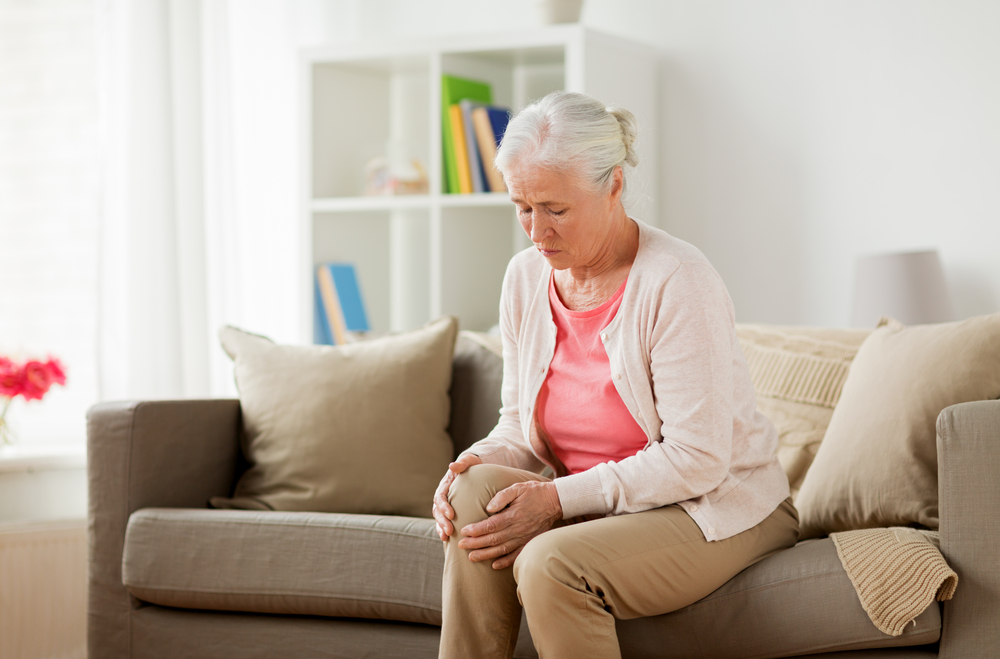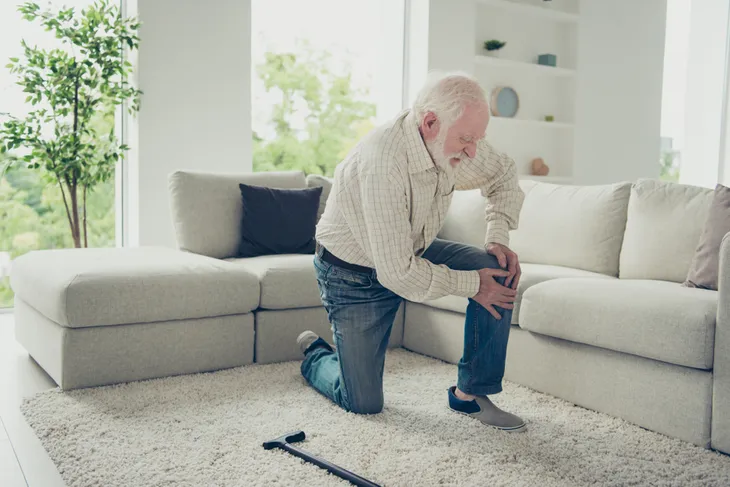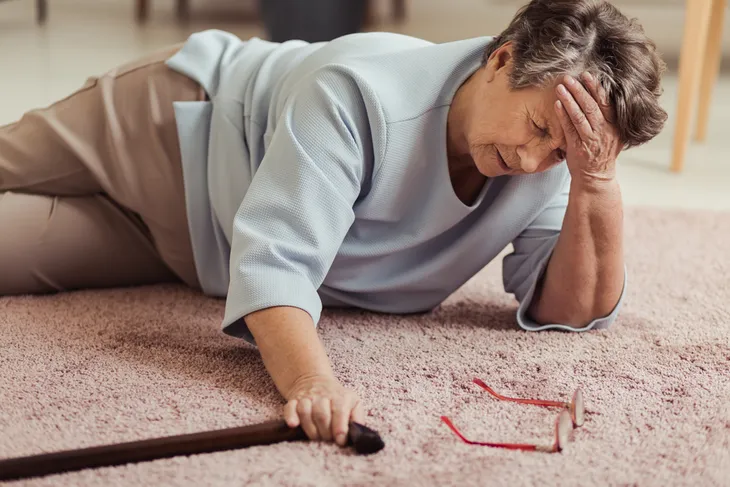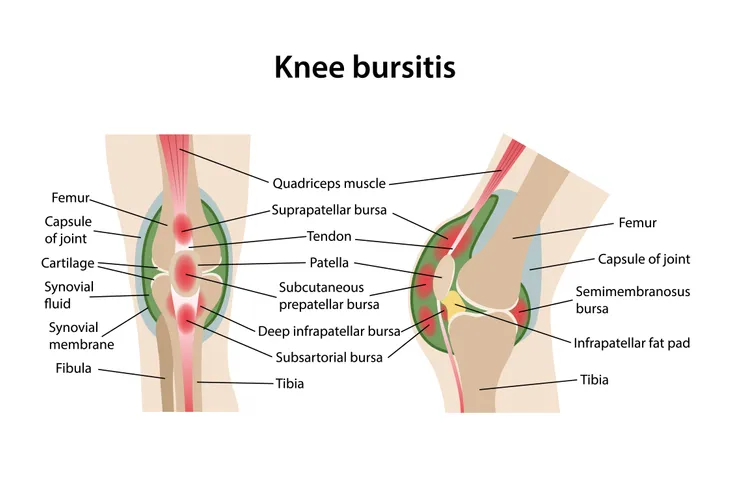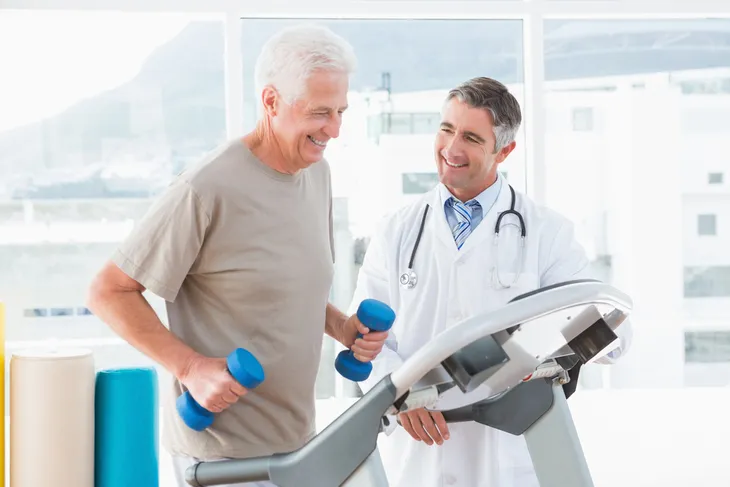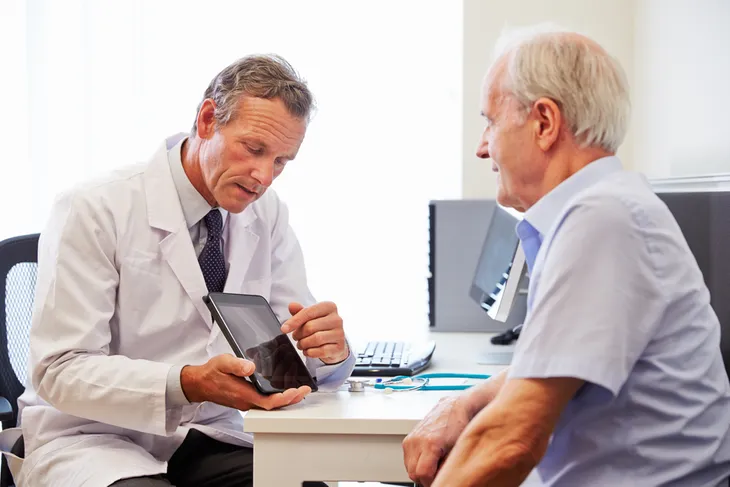Did you know with every step you take, your knees absorb one-and-a-half times your body weight? That’s a ton of pressure put on your knees. That pressure plus regular wear and tear can take a huge toll on your knees over time and can even lead to osteoarthritis, which is one of the most common causes of knee pain.
Knee pain can also be caused by several other factors, and symptoms will vary from person to person. Dealing with knee pain is never fun and that’s why determining the root cause as soon as possible is vital if you want to get on the road to recovery. Follow along as we explore some of the most common causes of knee pain in seniors
Want senior content delivered straight to your inbox? Sign up for our exclusive email list and receive articles and news on diet & nutrition, fitness, and mental health dedicated specifically to our senior audience!
Symptoms of Knee Pain
Suffering from knee pain is never fun. Before diving into some of the common causes of knee pain, let’s explore the common symptoms. The severity of the pain can vary depending on the cause of the problem and the location.
Some common signs and symptoms of knee pain include swelling and stiffness, as well as redness, in the knee. Your knee may even feel warm to the touch. Other common symptoms include not being able to fully straighten the knee, weakness or instability, and popping or crunching noises.
Fractures
A patella fracture (fracture of the kneecap) is one of the most common causes of knee pain. This can occur when there is a blow with extreme force to the knee, such as a bad fall, landing directly on the kneecap. It can also be caused by a car collision if the knee hits the dashboard during the accident.
Furthermore, sometimes moving the wrong way can cause a fracture. This is common in seniors who suffer from osteoporosis (a disease that causes the bones to become weak and brittle). A fracture of the kneecap can cause severe knee pain and requires medical attention immediately.
Arthritis
Arthritis is one of the most common causes of knee pain in seniors. Osteoarthritis (also called degenerative joint disease) of the knee is also one of the five leading causes of disability among older adults.
Articular cartilage is a smooth, fibrous connective tissue that acts as a protective cushion between joints, and arthritis develops when the cartilage begins to deteriorate. This can happen with use and age. As it progresses, normal activity in the knee can become painful and difficult.
Unfortunately, there is no cure for arthritis. That said, there are treatment options available that will help you manage the pain and keep you active.
ACL Injury
An ACL injury is a tear of the anterior cruciate ligament (ACL) which is one of the major ligaments in your knee. This type of injury most commonly occurs during athletic activities, but it can also happen as a result of a fall or vehicle collision.
Common symptoms of an ACL injury include pain and swelling in the knee, as well as instability in the knee. If your doctor suspects you may have an ACL tear, there are several tests he/she can perform. This may be just a physical exam or they may need to use an ultrasound, magnetic resonance imaging (MRI) or X-rays, to determine the health of the joint. From there, your doctor will be able to create a treatment plan for you.
Knee Bursitis
Your knee pain could be caused by knee bursitis. Bursae are small sacs that cushion your joints to help reduce friction, and each knee has 11 bursae. Knee bursitis happens when one or multiple bursae become inflamed. Symptoms can vary depending on what is causing the problem, but common symptoms include a swollen, warm, and tender knee, as well as pain.
Bursitis can be caused by frequent pressure, such as kneeling on hard surfaces, strenuous activity, a direct blow to the knee, and a bacterial infection of the bursa, as well as complications from rheumatoid arthritis, osteoarthritis, or gout in the knee. To help prevent this from happening, try your best to wear kneeling pads when gardening, avoid excessive squatting, maintain a healthy weight, and don’t forget to take breaks.
Patellar Tendinitis
The patellar tendon connects the quadriceps muscles (front of the thigh) to the shinbone. When you overuse your knees you can get patellar tendinitis, which is also known as jumper’s knee. Mayo Clinic explains, “Patellar tendinitis is an injury to the tendon connecting your kneecap (patella) to your shinbone.”
While athletes who jump a lot during sports are most at risk, it can also happen to people who don’t participate in jumping sports. Other risk factors include muscular imbalance and chronic illnesses. The first symptom is pain between your kneecap and where the tendon attaches to your shinbone. Make sure you see a doctor if the pain worsens or if it interferes with your daily activities.
Hip or Foot Pain
Before the knee pain started were you experiencing hip or foot pain? This could be the cause. If you experience hip or foot pain you could change the way you walk to help ease the pain in other areas of your body. However, doing so can put more stress on your knee joints and thus result in painful knees.
Knee and hip pain could also be a sign of hip arthritis. Make sure you speak to your doctor if you’re experiencing pain in multiple areas of your body to determine the root cause.
Patellofemoral Pain Syndrome
If you run regularly and are experiencing knee pain, you might have patellofemoral pain syndrome. This can also affect people who participate in activities that require repetitive knee bending, such as climbing, biking, and jumping. While this condition is most common in young, athletic people, it can also occur in older adults who suffer from arthritis of the knee.
Symptoms of patellofemoral pain syndrome include pain around or behind the knee cap, pain while bending the knee, and swelling, as well as popping or grinding sensations. You may also experience more pain when walking down an incline.
Some treatment options for patellofemoral pain syndrome include resting and icing the knee, anti-inflammatory medications, compression, and elevation. You might also need to try stretching and strengthening exercises and opt for shoe orthotics.
Risk Factors and Prevention Tips
Several factors can increase your risk of having knee problems. This includes excess weight, lack of muscle strength and flexibility, previous injuries, and some sports and occupations that put added stress on your knees.
The good news is that there are some preventive measures you can take to help decrease your risk of developing knee pain. This includes maintaining a healthy weight, exercising regularly (with proper form), and maintaining or improving flexibility.
When to See a Doctor
The good news is that not all knee pain is serious. That being said, some conditions and injuries can lead to severe pain or even permanent damage if left untreated. So, when is it time to see a doctor?
Make sure you call your doctor if you’re experiencing knee swelling, notice an obvious deformity in your knee, or if you can’t support your weight on your knee. Other serious symptoms to look out for is if you are experiencing a fever or severe pain after an injury.
